Related Research Articles

Manila, officially the City of Manila, is the capital and second-most populous city of the Philippines. Located on the eastern shore of Manila Bay on the island of Luzon, it is classified as a highly urbanized city. As of 2019, it is the world's most densely populated city proper. It was the first chartered city in the country, and was designated as such by the Philippine Commission Act No. 183 on July 31, 1901. It became autonomous with the passage of Republic Act No. 409, "The Revised Charter of the City of Manila", on June 18, 1949. Manila is considered to be part of the world's original set of global cities because its commercial networks were the first to extend across the Pacific Ocean and connect Asia with the Spanish Americas through the galleon trade; when this was accomplished, it was the first time an uninterrupted chain of trade routes circling the planet had been established.

Quezon City, also known as the City of Quezon and Q.C., is the most populous city in the Philippines. According to the 2020 census, it has a population of 2,960,048 people. It was founded on October 12, 1939, and was named after Manuel L. Quezon, the second president of the Philippines.
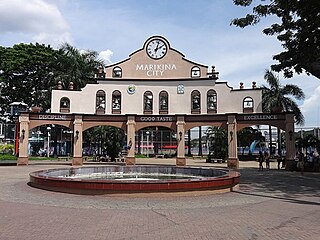
Marikina, officially the City of Marikina, is a 1st class highly urbanized city in the National Capital Region of the Philippines. According to the 2020 census, it has a population of 456,159 people.

Elpidio Rivera Quirino was a Filipino lawyer and politician who served as the 6th President of the Philippines from 1948 to 1953.

Intramuros, is the 0.67-square-kilometer (0.26 sq mi) historic walled area within the city of Manila, the capital of the Philippines. It is administered by the Intramuros Administration with the help of the city government of Manila.

Angeles, officially the City of Angeles, is a 1st class highly urbanized city in the Central Luzon region of the Philippines. According to the 2020 census, it has a population of 462,928 people.

Jaime Lachica Sin, commonly and formally known as Jaime Cardinal Sin, was the 30th Roman Catholic Archbishop of Manila and the third cardinal from the Philippines. He was instrumental in the historic and peaceful 1986 People Power Revolution, which toppled the dictatorship and ended martial law under Ferdinand Marcos and installed Corazon Aquino as his successor in the Fifth Republic of the Philippines. He was also a key figure in the 2001 EDSA Revolution that replaced President Joseph Estrada with Gloria Macapagal Arroyo.

The Metropolitan Manila Development Authority is a government agency of the Philippines responsible for constituting the regional government of Metro Manila, comprising the capital city of Manila, the cities of Quezon City, Caloocan, Pasay, Mandaluyong, Makati, Pasig, Marikina, Muntinlupa, Las Piñas, Parañaque, Valenzuela, Malabon, Taguig, Navotas and San Juan, and the municipality of Pateros.
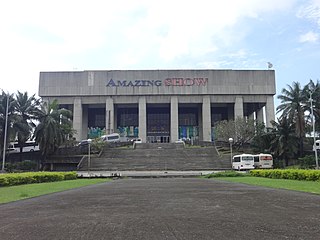
The Manila Film Center is a national building located at the southwest end of the Cultural Center of the Philippines Complex in Pasay, Philippines. The structure was designed by architect Froilan Hong where its edifice is supported on more than nine hundred piles which reaches to the bed-rock about 120 feet below.
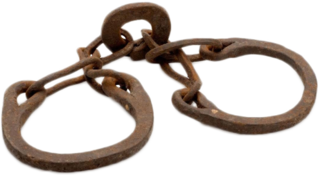
Human trafficking and the prostitution of children has been a significant issue in the Philippines, often controlled by organized crime syndicates. Human trafficking is a crime against humanity.
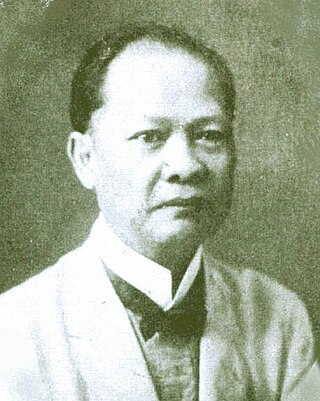
Julio Nakpil y García was a Filipino musician, composer and a General during the Philippine Revolution against Spain. He was a member of the Katipunan, a secret society turned revolutionary government which was formed to overthrow the Spanish government in the Philippines. His Katipunan adoptive name was J. Giliw or simply Giliw. He was commissioned by Andres Bonifacio, President of the Insurgent Tagalog Republic, to compose a hymn which was intended to become the National Anthem of the Tagalog Republic. That hymn was entitled "Marangal na Dalit ng Katagalugan". Thus, to some, he is remembered as the composer of the first national anthem of the Philippines. He is also a known huge critic of Emilio Aguinaldo.
Prostitution in the Philippines is illegal, although somewhat tolerated, with law enforcement being rare with regards to sex workers. Penalties range up to life imprisonment for those involved in trafficking, which is covered by the Anti-Trafficking in Persons Act of 2003. Prostitution is available through bars, karaoke bars, massage parlors, brothels, street walkers, and escort services.
The jailing of children in the Philippines is a significant problem. According to Amnesty International, over 50,000 children in the Philippines have been arrested and detained since 1995. Torture, rape and other forms of cruel and inhumane treatment are a part of everyday life for those children while they are incarcerated. Most are charged with minor crimes, such as petty theft, sniffing solvents and vagrancy.
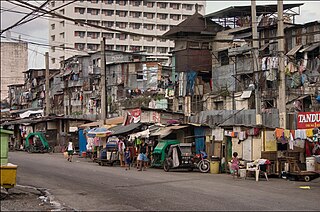
Street children in the Philippines was first seen in the 1980s, and is estimated to be 250,000.

The Jose Abad Santos Memorial School, or JASMS, is the basic education institution of the Philippine Women's University (PWU). JASMS offers preschool, elementary, and secondary education. The school is an acknowledged pioneer in progressive education developed from and for the Philippine democratic experience based on a unique approach described as learning to be free by its founding director, the late Doreen Barber Gamboa.
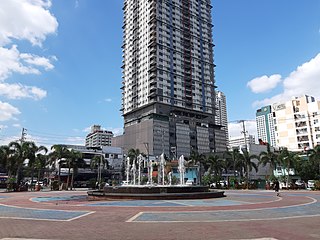
Remedios Circle, also known as the Plaza de la Virgen de los Remedios, Remedios Rotonda, and Rotary Circle, is a traffic circle in Malate, Manila in the Philippines, serving as the intersection between Remedios Street, Jorge Bocobo Street and Adriatico Street. The circle and a traversing street are both named after Nuestra Señora de los Remedios, the patroness of the nearby Malate Church, and is one of two major open spaces in Malate, the other being Plaza Rajah Sulayman.
Elmer Misa Borlongan is a prominent contemporary Filipino painter best known for his distinctive use of figurative expressionism.

Pope Francis made a pastoral and state visit to the Philippines from January 15 to 19, 2015. He was the third pontiff to visit the Philippines after Paul VI in 1970 and John Paul II in 1981 and 1995, and officially the first papal visit in the 21st century and 3rd millennium after the title was originally scheduled for World Meeting of Families in 2003 but postponed due to John Paul II was unable to attend because of the progression of his Parkinson's disease. Besides Manila, Francis visited Tacloban and Palo, Leyte, to encourage the victims of Typhoon Haiyan (Yolanda) and Typhoon Hagupit (Ruby). The Filipinos nicknamed Francis Lolo Kiko as a term of endearment, which he commended. Around 6–7 million attended Francis' final Papal Mass at Luneta, surpassing the crowd at World Youth Day 1995 in the same venue and making it the largest papal crowd in history. The theme of Francis' 2015 visit was "Mercy and Compassion".
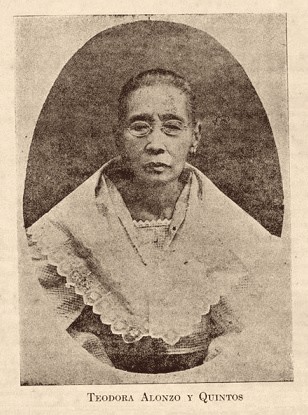
Teodora Alonso Realonda y Quintos was a wealthy woman in the Spanish colonial Philippines. She was best known as the mother of the Philippines' national hero Jose Rizal. Realonda was born in Santa Cruz, Manila. She was also known for being a disciplinarian and hard-working mother. Her medical condition inspired Rizal to take up medicine.

The Embassy of the Philippines in Tel Aviv is the diplomatic mission of the Republic of the Philippines to the State of Israel. Opened in 1962, it is located on 18 Bnei Dan Street in the Yehuda HaMaccabi neighborhood of central Tel Aviv, across from Yarkon Park.
References
- ↑ Rodriguez, Fritzie. "Finding 'Frederico'".
- ↑ "DSWD: Street children are part of papal visit".